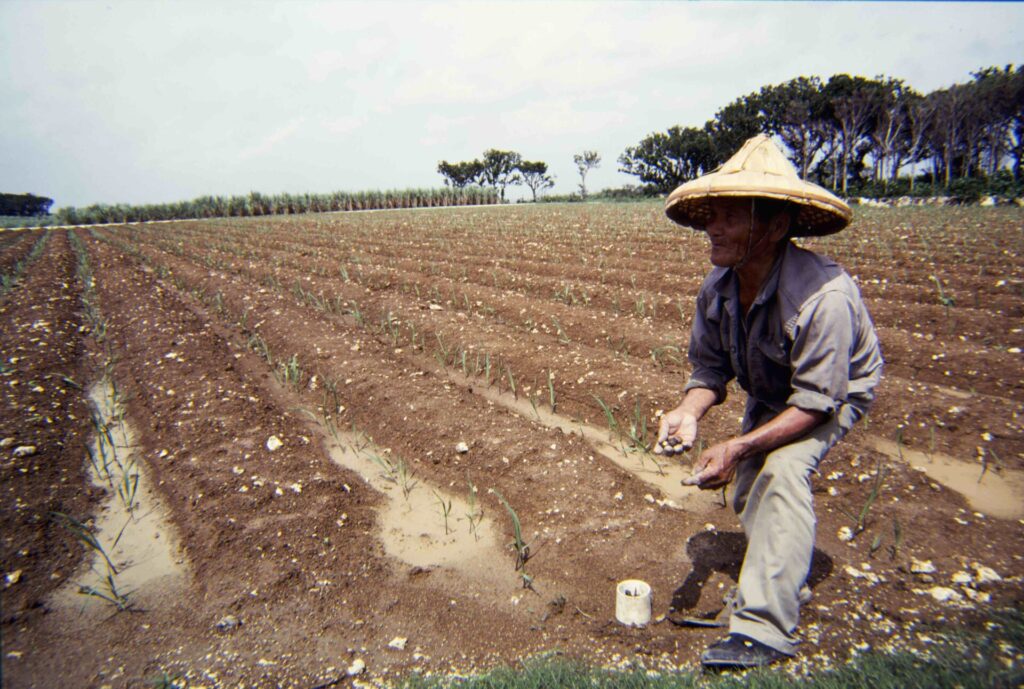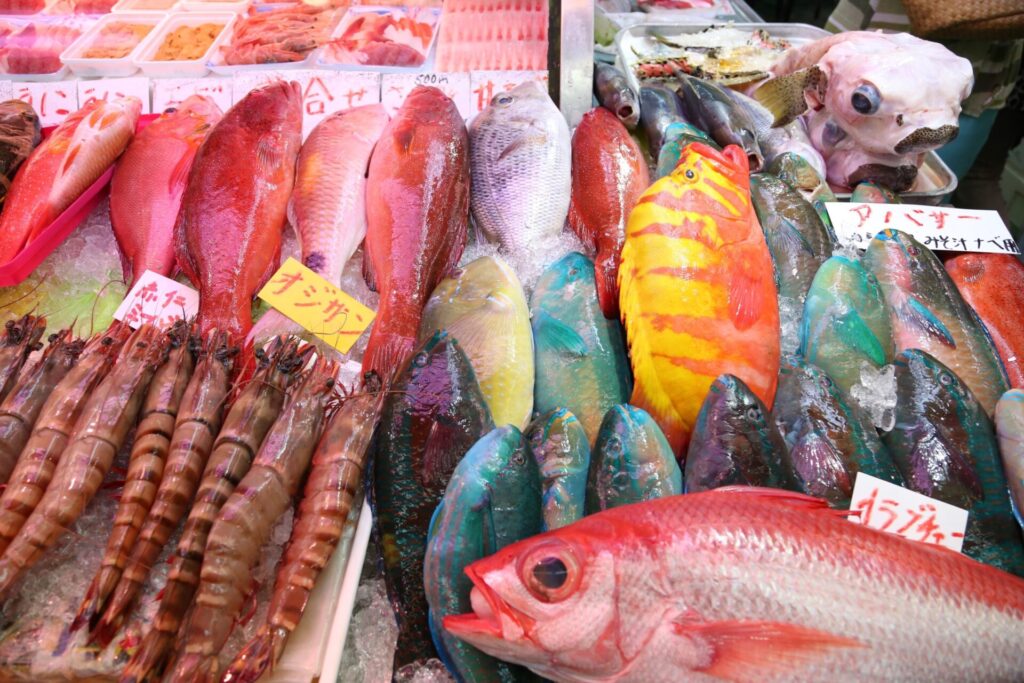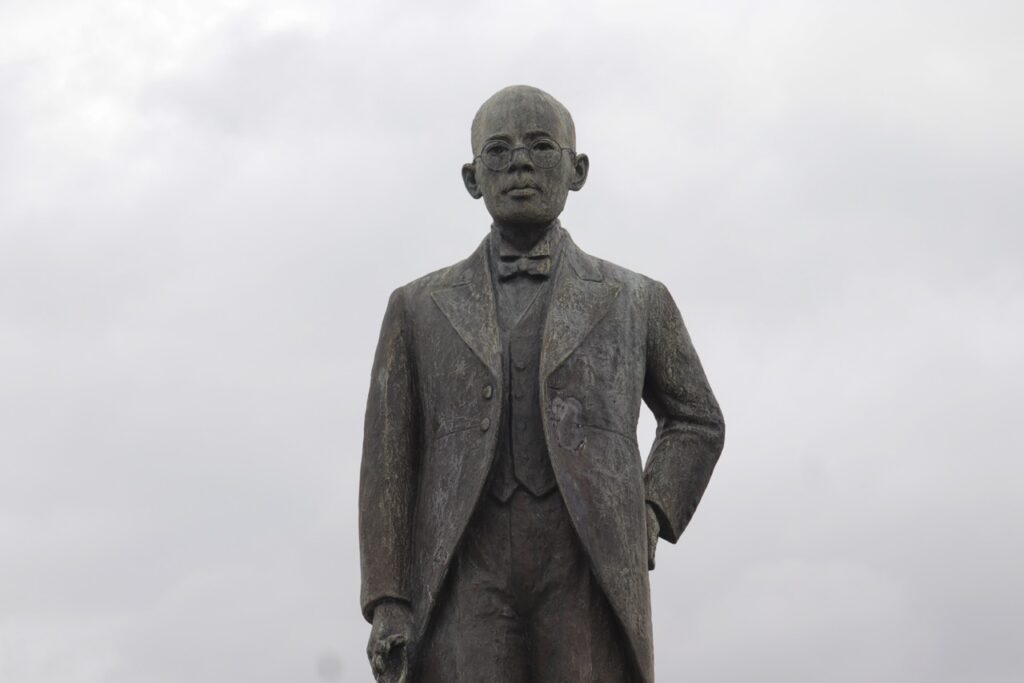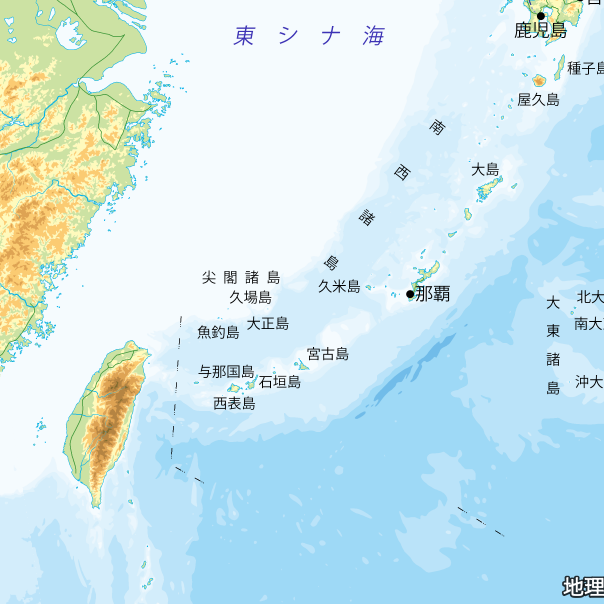Tida

In Okinawan, we call the sun tida or teda. There are a few different theories as to the origin of this word: a change in the pronunciation of the verb for “to shine”—teru—or one of the many nouns for the sun—tendō. When it’s both rainy and sunny, that’s tīda’ami—sunrain. There are some places where they say tīda’bui—sunfall—instead. There’s a nearly identical word, tīda’būi, which means “basking in the sun.” On summer beaches, tourists line up on the sand in droves and tīda’būi.
In everyday speech, tida is just the sun, but in the system of myths from the Ryukyu Arc, the role of the tida is immense. In ancient Okinawa, the sun god was considered the center of the universe. Back then, it was believed that every day the sun rose from a hole in the east and set in a hole in the west. This “tida-in-hole” actually exists—the sacred site of Kubō on Kudaka Island was believed to be one such hole. In the Omoro sōshi, a collection of ancient songs and poems from Okinawa, there’s a poem where the god of the sun addresses the goddess who watches over Kubō as “Mata teda ga ana no tsukasako,” which roughly translates to “Administrator o’er tida-in-hole.” But of course this is simply a title, and in the period when the Omoro was written, they may not have even believed the sun rose from a hole anymore.
The sun often chose a human woman to be his wife. It is apparently the god-wife’s role to make clothing. This may be a reflection of accounts in mainland Japan’s foundational mythos, the Kojiki, in which Amaterasu, the goddess of the sun, weaves clothing for the gods.
On the other hand, there are also tales in Okinawa of weaver maidens being impregnated by the light of the sun.
In the Ryukyu Arc, one of the most well-known stories is Omoi Matsugane, which comes from the island of Amami Ōshima. In the story, Omoi Matsugane is the sun’s beloved, and she gives birth to a child who eventually ascends to the heavens; after many trials and tribulations, the child is eventually acknowledged by his father, and so he becomes a diviner and returns to earth. Thereafter, Omoi Matsugane becomes the ancestor to all Okinawan shamanesses—called yuta—and her son becomes the ancestor to all Okinawan shamans—called toki.
Tida is also an honorific title for chieftains and kings. We see this in a song praising a chieftain from Ōzato:
Ōzato no teda no
Teda kiyo no anji no
Mikanashi teda
Mata sakura iro no teda yo
Matama iro no teda yo
Ōzato’s sun’s
sun’s chieftain’s
beloved sun
O cherry blossom sun
O pearl sun
On islands in subtropical regions, our sense of the sun’s existence is powerful indeed. Is it because our chieftains really do shine with grace that we extol them and liken them to the sun? Perhaps instead those who had to work outdoors in the sun’s burning heat used this expression with a touch of sarcasm against the chieftains’ overwhelming coercive powers—at least that’s what I wondered one hot afternoon as I walked from Uehara to Hoshitate in Iriomote, hating the glaring sunlight all the way.




































































































































































































































